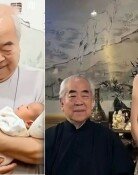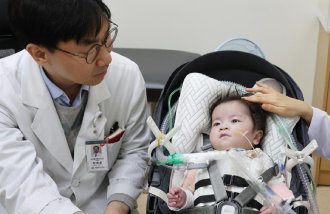South Korea Was Too Weak to Make its Own Decisions
South Korea Was Too Weak to Make its Own Decisions
Posted September. 16, 2004 21:58,
In the Unification Pavilion located on the northern side of the joint security area in the Panmunjom truce village on December 31, 1991, a Pandoras Box that would leave South Korea caught in a dilemma was opening.
The South and North, which had continued marathon negotiations at Peace Houses on both sides since December 26, finally agreed on a draft of the Joint Declaration on the Denuclearization of the Korean Peninsula, and temporarily signed the agreement. About 128 hours had passed since the beginning of the negotiations, and meetings were suspended six times on the last day.
The repercussions were considerable. The Korean government was placed under severe criticism since it voluntarily declared to give up enriching uranium, reprocessing nuclear waste, and building facilities for enriched uranium. Some denounce that this policy failure 13 years ago is to blame for the International Atomic Energy Agency (IAEA) expressing serious concern over South Koreas nuclear experiments and sending an inspection team.
That was the best measure the government could take in response to the U.S. policy changes to withdraw nuclear weapons from the Korean Peninsula, and the Norths nuclear ambitions, said policymakers who were involved in the joint declaration, defending themselves.
Representatives who participated in the negotiations recall that they did not expect the North to fully implement the joint declaration. The South, however, has honored the agreement.
The issue here is that the international community has doubts that South Korea, along with North Korea, did not honor its promises. So, was the Joint Declaration of Denuclearization a mistake from the beginning?
At that time, North Korea was suspected of developing nuclear weapons while delaying ratifying the IAEA Nuclear Safeguard Agreement. Therefore, the South Korean governments priority was to stop the North from developing nuclear weapons and let the North allow IAEA inspections. The most tangible result of the joint declaration was the North allowing the IAEA inspections, said Lee Dong-bok, a special envoy during the negotiations.
From the perspective of international relations, chances were high that Koreas security would be compromised even more if we had nuclear weapons, said Kim Jong-hwi, former senior foreign policy advisor to the president. We concluded that possessing nuclear weapons would damage our national interests given our relations with the U.S., China, Russia, and Japan.
In those days, non-proliferation was a new world order, which was led by big powers, including the U.S. The government thought that its security would be protected under the U.S. nuclear umbrella even after U.S. nuclear weapons were withdrawn from the peninsula.
Not all policies could be implemented; some are possible and some are impossible. It was impossible for us to have nuclear reprocessing and enriching facilities and declare denuclearization at the same time, said an official who was involved in the draft of the joint declaration.
Former advisor Kim said, Even the U.S. had doubts about our will to push for a nuclear-free Korean Peninsula; the government could not insist on having nuclear reprocessing plant. It was also impossible to persuade the North to do away with nuclear reprocessing facilities while insisting on having such facilities in the South.
We should be economically independent from the U.S. or neighboring countries in order to have nuclear reprocessing facilities, and gain enough trust from the international community to dispel any doubts over our nuclear development, said former Special Envoy Lee, indicating that Korea, whose national strength was weak, had no other options.
The declaration of denuclearization was requested by the U.S., which demanded through various channels that the South discuss the issue at inter-Korean high-level talks, government officials who served at that time said unanimously.
The U.S., which had decided to withdraw strategic nuclear weapons from Korea and around the world, wanted to address North Korean nuclear issue together with the withdrawal. The Joint Declaration of Denuclearization was the ultimate outcome.
The U.S. influenced every word of the joint declaration. It gave us a draft of the joint declaration before the inter-Korea negotiations began, and we followed the draft, said former Envoy Lee. The clause of Article 3, which banned nuclear reprocessing and enrichment facilities, was proposed by the U.S. which harbored suspicions that South Korea might develop nuclear weapons, and which wanted to put restrictions on the South.
taewon_ha@donga.com





![요양원 321곳 중 85곳 “치매발병후 기초수급자 전락 사례 있어”[히어로콘텐츠/헌트③-下]](https://dimg.donga.com/c/138/175/90/1/wps/NEWS/IMAGE/2025/12/16/132980397.1.jpg)

